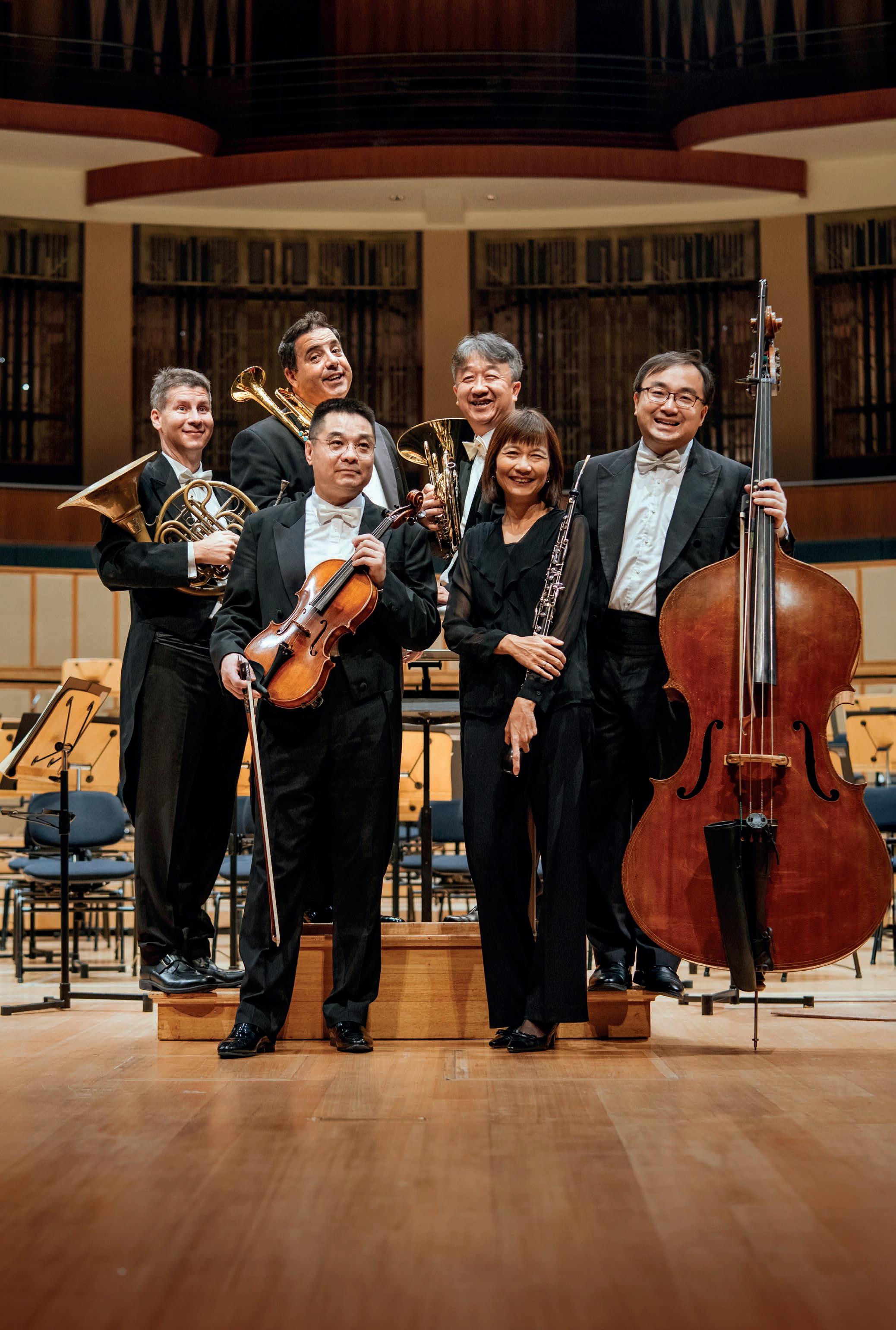
25 May 2024, Sat
Victoria Concert Hall


25 May 2024, Sat
Victoria Concert Hall
A premier body for classical choral singing, the Singapore Symphony Choruses comprise the Singapore Symphony Chorus, Singapore Symphony Youth Choir and Singapore Symphony Children’s Choir.
Drawing membership from diverse ages, nationalities and walks of life, our Choruses embody a comprehensive singing ecosystem that nurtures the brilliance of our brightest young talents, inspires youthful passion for the art and celebrates the best of choral excellence!
Scan the QR code and visit our website for more details on audition and training opportunities.
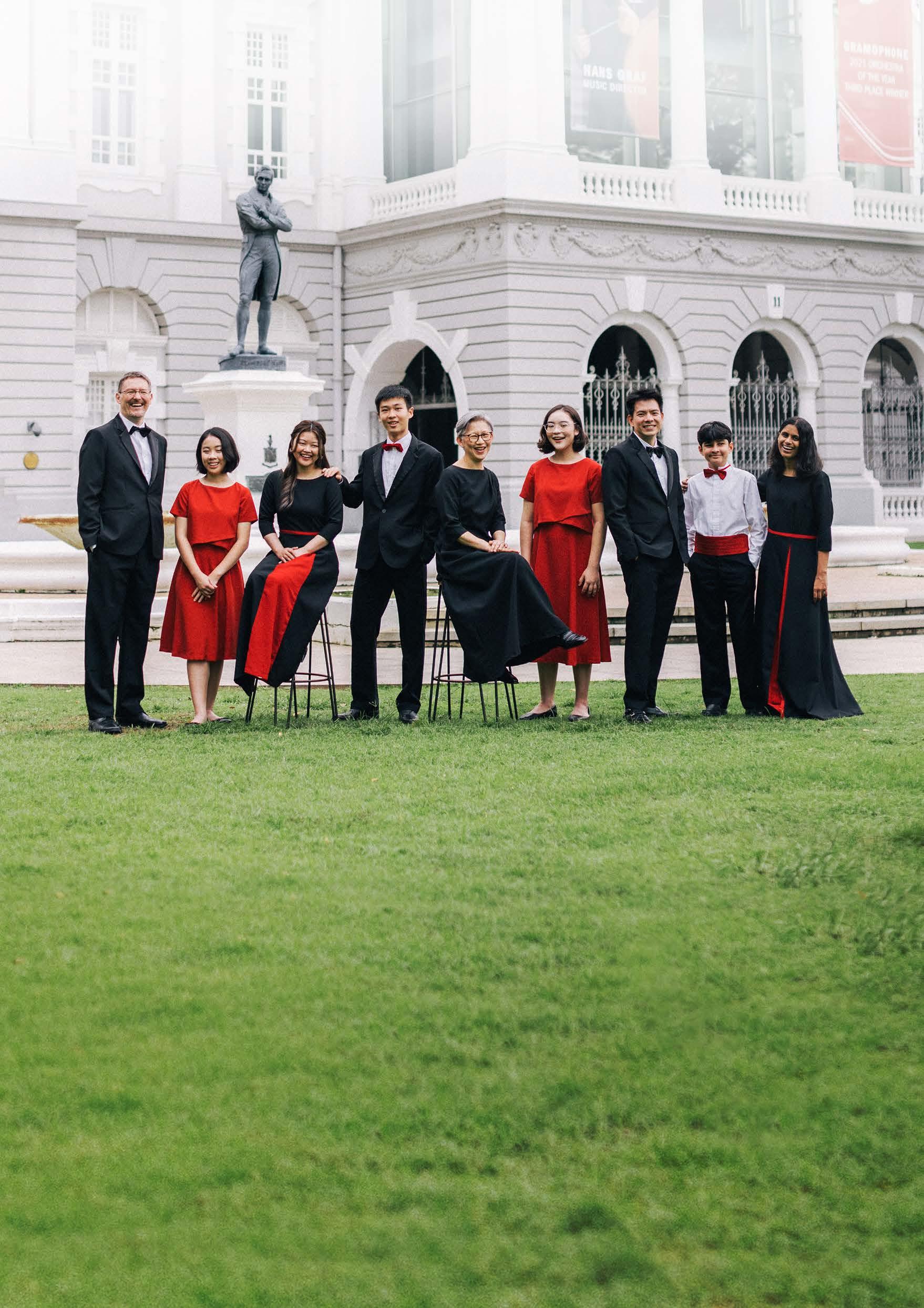
Scan for more information
SSO.ORG.SG/CHORUSES
25 May 2024, Sat
Victoria Concert Hall
Singapore Symphony Children’s Choir
Wong Lai Foon & Ellissa Sayampanathan conductors
Low Jinhong piano
Angela Lim organ
Shavaun Toh cello
ERNANI AGUIAR
Salmo 150 20 mins
MIKLÓS KOSCÁR Salve Regina 4 mins
EDVARD GRIEG
JOHANNES BRAHMS
GABRIEL FAURÉ
GYÖRGY ORBÁN
ELAINE HAGENBERG
FRANCISCO FELICIANO
VELJO TORMIS
BÉLA BARTÓK
FRANZ SCHUBERT
BOB CHILCOTT
KELLY TANG
DANIEL ELDER
SERGEI RACHMANINOFF
Ave Maris Stella (arr. Julio Domínguez) 3 mins
Ave Maria, Op. 12 4 mins
Cantique de Jean Racine, Op. 11 5 mins
Gloria from Mass No. 6 3 mins
O Love 4 mins
Intermission 20 mins
Silence My Soul 3 mins
Laulika Lapsepõli 2.5 mins
Ne Haygyj Itt! 2.5 mins
Die Forelle, D. 550 (The Trout) 2 mins
Music to Hear 3.5 mins
The Wind 2 mins
Lullaby from Three Nocturnes 4 mins
Spring Waters (arr. Elena Sharkova) 2 mins

© Michelle Tng Ying
Established in 2006, the Singapore Symphony Children’s Choir (SSCC) is an exciting and unique opportunity for young singers to work alongside the national orchestra and world-class conductors!
Based at the Victoria Concert Hall, Singapore’s leading children’s choir is dedicated to a holistic training approach that nurtures well-rounded artistic growth, cultivates discipline and confidence, and inspires a lifelong love for music and the arts. More than a choir, the SSCC is a life journey of learning, growth, lasting friendships, and music-making at its best.
SSCC has performed great choral masterpieces under the baton of distinguished conductors such as Lim Yau, Sofi Jeannin and François-Xavier Roth, and even shared the stage with critically acclaimed vocal group, The King’s Singers. Most recently, the choir, together with the Singapore Symphony Youth Choir, premiered a treble arrangement of Faure’s Requiem under the direction of world-renowned choral conductor Stephen Layton.
Outside of the concert hall, SSCC has sung at the Istana, presented at the 33rd ASEAN Summit and toured and performed at the Philharmonie de Paris in collaboration with Maîtrise de Radio France, as well as at Dewan Filharmonik Petronas in Kuala Lumpur with the Malaysian Philharmonic Youth Orchestra in concert. The choir actively continues to commission and perform works by Singaporean composers such as Darius Lim, Zechariah Goh, Kelly Tang, and Alicia De Silva.
The SSCC’s commitment to musical excellence has enriched generations of singers and audiences, laying the foundation for choral patronage in the local music scene. Along with their fellow choruses, the SSCC is a key player in inspiring young musicians as well as shaping the future of choral music in Singapore and beyond.
Wong Lai Foon Choirmaster
Ellissa Sayampanathan Assistant Choral Conductor
Low Jinhong rehearsal pianist
Miya Ang
Riyan Ballesteros-Pattanayak
Eleana Chan
Lisa Chang
Elizabeth Chern
Chin Yi Hao
Halyn Cho
Hailey Chua
Deng Handing
Emma Foo
Dylan Francis
Fu Yuqi
Colleen Fung
Aureilee Gooi
Graciella Gunawan
Emily Hia
Abigail Ho
Charlotte Ho
Cloris Ho
Isabelle Ho
Clarita Hutabarat
Joshika Kandasamy
Olivia Kennedy-White
Ropheka Khoo
Kim Yewon
Marian Koh
Emma Lee-Goh
Melina Leong
Zoe Li
Eyzen Lim
Megan Montefrio
Lei Nakayasu
Alyssa Ng
Ng Yi Poh
Joseph Nyan
Riann Ong
Sophie Ong
Ong Sze Ying
Ong Wing Hei
Jing Fei Pang
Kaeshav Rajasekaran
Suri Rao
Genevieve Seow
Nadia Sri Kanda
Angeline Sun
Ashlynn Tan
Tan Caewyn
Emily Tan
Michael Tan
Shania Tay
Anya Teo
Germaine Teo
Wang Xiangning
Matthew Wong
Sophie Wong
Jessica Xu
Evelyn Xue
Cammi Yeo
Stanley Yuan
Kellyn Hidayah Yusri
Alex Zhang
Zhang Yixuan
Chloe Zhou
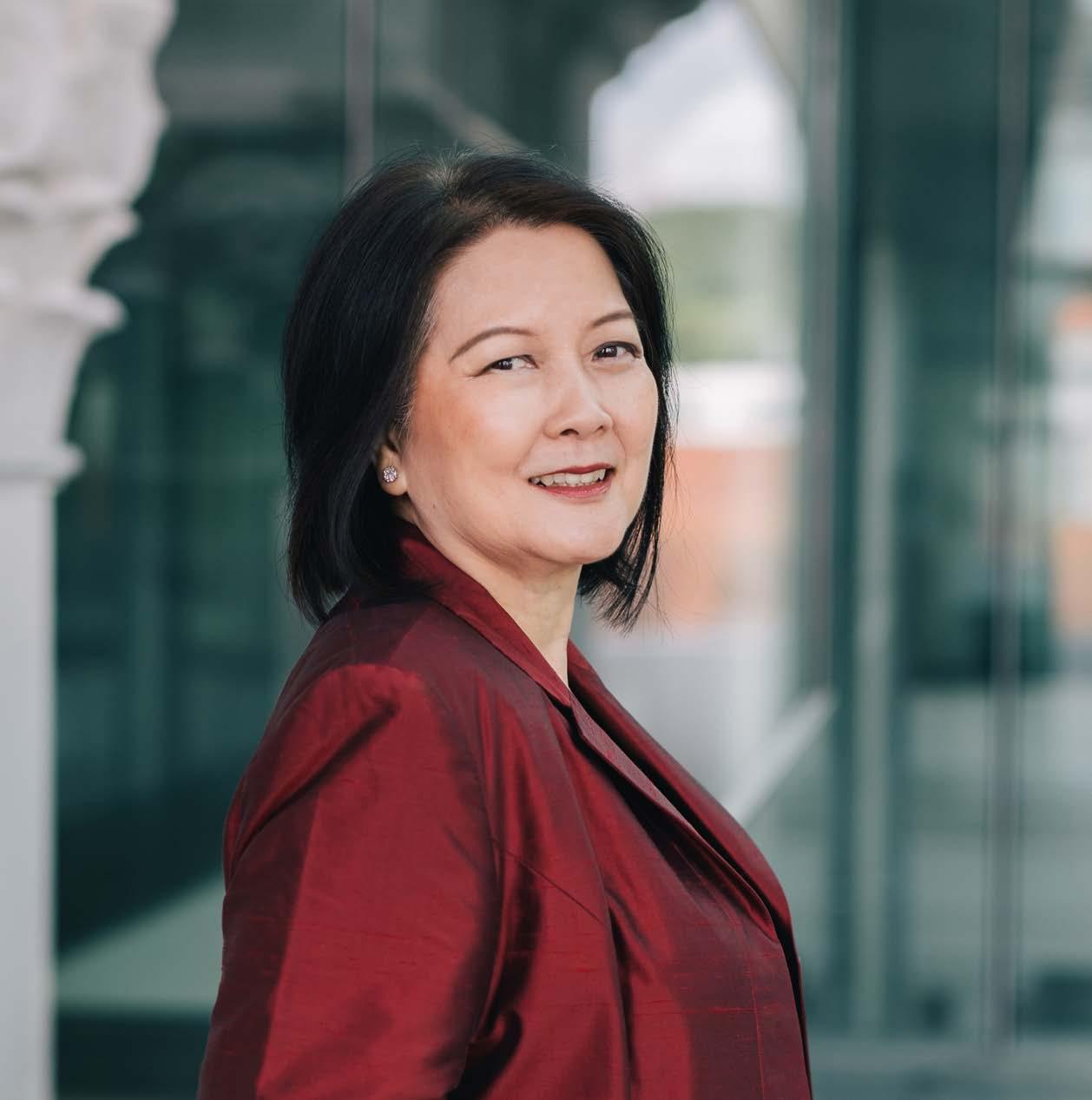
Wong Lai Foon has been a driving force behind the development and growth of the Singapore Symphony Children’s Choir (SSCC) since its inception in 2006. Appointed Choirmaster in 2015 and armed with a mission to nurture young voices and inspire choral excellence, she led in the expansion of the SSCC’s training programme to include six preparatory ensembles, as well as the formation of the Singapore Symphony Youth Choir (SSYC) in 2016.
With repertoire ranging from Baroque to opera to contemporary and popular music, she has directed the SSCC and SSYC in a wide array of concerts, often receiving praise for the choirs’ beautiful tone and sensitivity. She has prepared the choirs in collaborations with renowned conductors and performers such as Stephen Layton, The King’s Singers, and Sofi Jeanin and la Maîtrise de Radio France. The SSCC has also had the distinction of being invited to perform at state functions.
Wong has commissioned and premiered treble choir works by local composers and has also arranged for the SSCC and SSYC. Her efforts to educate and inspire singers extend into the community through workshops, talks, as well as adjudicator, chorus-master and guest-conductor roles. Some ensembles that she has worked with include The Philharmonic Chamber Choir, Singapore Symphony Chorus, Singapore Lyric Opera, Hallelujah Singers, and Methodist Festival Choir. She holds a master’s degree in choral conducting from Westminster Choir College, USA.

Ellissa Sayampanathan is a Singaporean conductor and music educator who believes in the building of community and music literacy through choral singing. Ellissa assumed the role of Assistant Choral Conductor of the Singapore Symphony Orchestra (SSO) in 2024, after serving as the Choral Fellow (Conducting) since 2021. Over these years, Ellissa has been active as an instructor and singer with the SSO’s Choral Programmes, developed the Singapore Symphony Children’s Choir’s current musicianship curriculum, and been involved in a variety of other community outreach programmes within the SSO.
Ellissa graduated from the University of Cambridge with a Master of Music (Choral Conducting), and studied Music Pedagogy at the Kodály Institute in Kecskemét (Hungary). She was a choral scholar with The Choir of Trinity College, Cambridge, has had the pleasure of traveling extensively with a variety of ensembles as either conductor, workshop clinician, singer, or soloist, and is ever-inspired by the lens of culture and history in music-making. She is grateful to have received mentorship in choral conducting from Stephen Layton, Pad Zoltán, Graham Ross, Geoffrey Webber, and Éva Rozgonyi.
Besides her work at the SSO, Ellissa currently serves as the VicePresident of the Choral Directors’ Association (Singapore), is a Founder and Director of Chroma, a choral collective based in Singapore, and conducts a number of school choirs, including choirs at the Methodist Girls’ School and St. Margaret’s School (Primary). She remains active as a singer in various ensembles, and relishes every opportunity to use her voice in music making. She spends part of her life teaching music in Special Education classrooms, developing and teaching curriculum for a number of preschools, and advocates for the arts to be accessible to all.
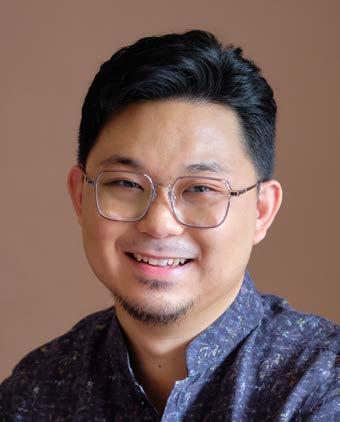
Jinhong has acquired a wide range of pianistic skills throughout his musical education by engaging in unconventional repertoire and exciting collaborations. A graduate of the Royal College of Music (London), he attained his Master of Music in Performance under the guidance of Andrew Zolinsky and the late Niel Immelmann. Prior to his studies abroad, Jinhong was a Ngee Ann Kongsi Scholar studying with Nicholas Ong at the Nanyang Academy of Fine Arts (NAFA). As an avid accompanist, Jinhong performs regularly with instrumental and vocal students from NAFA. He has since developed a continual working relationship with some of them to put up recitals. He is also a member of local new music ensemble, weird aftertaste, where he dabbles with live sound and occasionally performs on the keyboard. His continued interest in the vocal medium has brought him into choral conducting and can sometimes also be seen singing in local community choirs.

Angela is an organist, teacher, and church musician. As a volunteer music director at the Cathedral of the Good Shepherd, she conducts the Saint Gregory and children’s choirs which sing weekly. She helped establish the Cathedral Organ Scholar Programme, training young musicians to become proficient church organists, choir leaders, and cantors. She also hosts monthly public tours on the cathedral’s 1912 Bevington & Sons organ. Angela teaches at the Methodist School of Music (MSM) and trains organists both locally and in Malaysia. She facilitates organ workshops for kids and young adults with both the MSM and the American Guild of Organists, of which she is a member. Angela holds a Bachelor’s degree in music from the University of Wales.
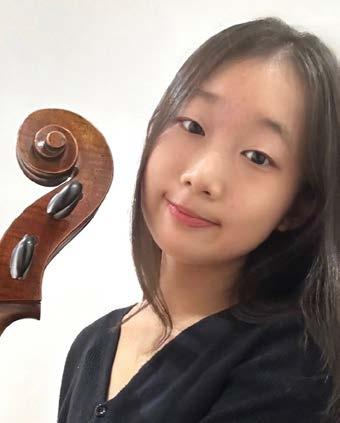
Shavaun, a gifted cellist from Singapore, began her musical journey at three with piano, later embracing the cello at seven, marking the genesis of a lifelong passion. Her unwavering dedication led her from primary school bands to solo, chamber, and orchestra performances, winning numerous awards along the way. She contributed to orchestras like Singapore National Youth Orchestra and Orchestra of the Music Makers and attended the Cuskelly School of Music in 2024. Accepted into School of the Arts Singapore at thirteen, she thrived as a chamber musician, leading the cello section and contributing to transformative sounds. Shavaun's journey embodies a blend of cultural richness and artistic expression, fostering friendships worldwide through music.
Both poetry and music – composed to be performed – are sound painted on the canvas of time. On this canvas, images are crafted in the mind of the listener with sounds that play with colour, timbre, duration, pitch, and texture. The medium of song not only borrows from both these palettes of creation, but finds synergy in stages of interpretation by poet, composer, performer – and tonight, listener.
We begin in the realm of the sacred with Brazilian composer Ernani Aguiar’s (b. 1950) Salmo 150. Beneath the surface of the rhythmic, dance-like character is a sensitivity to the chant tradition, where text inflexion dictates melodic contour. The text comes from Psalm 150, which narrates the use of a variety of instruments in worship, painted especially in the underlying rhythmic drive of the text that celebrates the sound of the drum.
Next, we hear three settings of Marian hymns. Each setting balances the simplicity and intimacy of the Virgin Mary’s character as a humble intercessor with her contrasting regal persona. Mikló s Kocsár (1933–2019) Salve Regina begins with splaying the colours of heaven in the image of the Virgin Mary, with a heavy use of close and cluster harmony. Kocsár later contrasts this with polyphonic segments that represent the stirring complexity sinful mortality brings, leading us to a simultaneously triumphant and pleading ending.
Edvard Grieg’s (1843–1907) sensitivity to folk elements results in an exclusively homophonic setting of the Ave Maris Stella, that honours the hymn tradition of his day. In his typical style, Grieg uses a simple melody and lush harmony, with harmonic shifts to paint darker shades of the text. The work ends with an introspective, prayerful Gloria Patri and Amen
Johannes Brahms’s (1833–1897) Ave Maria, Op. 12, was composed in 1858, and was amongst his early compositions for choir. Likely composed for a female choir he conducted in Hamburg, this version for choir and organ was scored in 1859. The work begins in antiphony, and continues until the conversation finds a quietened gaze in the last section of the hymn that declares the Virgin’s holiness.
A forerunner of his Requiem in character and compositional language, Gabriel Fauré’s (1845–1924) Cantique de Jean Racine was composed at age nineteen. The text by 17th century playwright and poet Jean Racine was penned based on the hymn Consors Paterni Luminis, commonly attributed to St. Ambrose of the 4th century. The work reflects the three verses of the text, with the intensity of the middle section soothed by the hope and submission in the conclusion.
This piety and pleading is then replaced with unbroken praise in György Orbán’s (b. 1947) Gloria from his Mass No. 6 . The work begins with a unified statement of the words “Gloria in excelsis Deo”, reminiscent of the tradition of incantation in a service. Similar to Aguiar’s Salmo 150, the rhythmic quality of the work is sensitive to the prosody of the text, preserving the history of the text’s treatment in the chant tradition. Orbán’s characteristic modal harmony is maintained amidst the powerful declaration that alternates between long, stirring lines and urgent, rhythmic insertions.
Contemporary American composer Elaine Hagenberg’s O Love concludes the first half of the programme with a setting of 19th century Scottish hymn writer George Mattheson’s O Love That Wilt Not Let Me Go. Hagenberg envelops the listener in lush harmony that paints the comfort of finding solace and union with the Divine – here personified by Love and Joy.
The second half opens with Filipino composer Francisco F. Feliciano’s (1941–2014) Silence My Soul, a meditation on text by polymath Rabindranath Tagore. The single-paged aleatoric work bridges us from the sacred to secular worlds with its pantheistic perspective. Beginning with a drone resembling the tambura, the choir then explores a responsive take on the text, before branching into a more dynamic rendering. The work stretches both the performer and listener’s understanding of the emotive and devotional quality of the text within the soundscape of the ether.
When setting poetry, the composer has the power to offer interpretation in the form of sound. However, when setting folk music, preservation is the priority. In this setting of Estonian folk tune Lauliku Lapsepõli, Veljo Tormis (1930–2017) iterates the folk tune plainly, with interjections after each line, creating an echoing atmosphere. The song speaks of the fleeting experiences of childhood, and the desire to collect and memoralise these experiences. As the story grows to its climax, so does the sound world we are placed in.
Hungarian composer Béla Bartók (1891–1945) was famous for incorporating folk tunes and other elements in his music. Ne Hagyj Itt! comes from a set of a capella works for treble choir that incorporate folk text, and speaks of the pain of losing a loved one. The imagery used in the poetry of labour and tearful disappointment manifested as invaluable pearls are skillfully painted with the simple use of drones and scales in canon.
Having composed more than 600 art songs, Franz Schubert (1797–1828) is often lauded as the father of the German Lied and was known for bringing to life the poetry of his day in song. Die Forelle was originally written for solo voice and piano, and the choir performs an arrangement by D. Jason Bishop. It tells the story of a carefree trout being caught, but has a moral slant, as the trout is a metaphor for a young girl susceptible to the lures of wily men.
Music to Hear was composed by Bob Chilcott (b. 1955) based on a sonnet by William Shakespeare. The sonnet associates marriage with music –both are built on the premise of multiple voices coming together to form harmony – giving commentary that points out the good in such a union, but in a rather unconvinced manner. Chilcott sets the text with sensitivity to the sonnet’s form, with the musical form matching each quatrain, and with a final punch at the volta before the final couplet.
Commissioned for the Singapore Youth Festival 2011, Singaporean composer Kelly Tang (b.1961) based The Wind on a poem by Robert Louis Stevenson. Stevenson personifies the wind with a varied temperament; the wind is invigorating as much as it is sometimes still, and is described as a dynamic child who sings himself. Tang writes movement into both the soaring lines of the voice and the flowing piano accompaniment to paint the gushing of the wind.
In both the worlds of poetry and song, treatment of text is performative; both are often published in print, but are meant to be audiated. Lullabies take advantage of long consonance and assonance to create a soothing effect on the listener, and this Lullaby from Three Nocturnes by Daniel Elder (b. 1986) pairs this with music that envelops the listener in comfort and warmth.
We conclude the programme with Sergei Rachmaninoff’s (1873–1943) refreshing Spring Waters, Op. 14, No. 11, that narrates how water heralds the coming of spring. Originally composed for solo voice and piano with text by Fyodor Tyutchev, the choir presents Elena Sharkova’s arrangement for treble choir and piano. Rivers are portrayed with vitality – especially through the piano accompaniment – finding life after thawing from extended rest in a long, harsh Russian winter, and water is personified as a dancing messenger of spring.
Programmes notes by Ellissa Sayampanathan
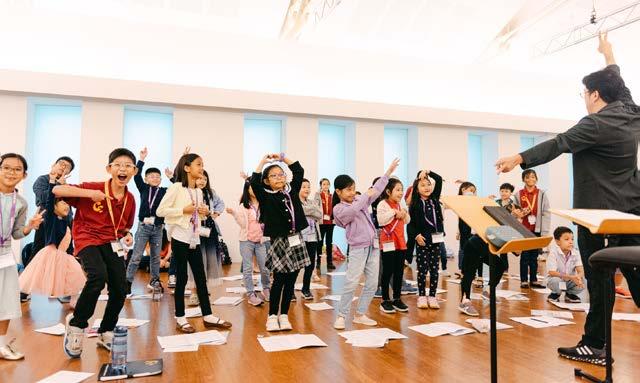
Nurture your child’s vocal brilliance with workshops conducted by the Singapore Symphony Children’s Choir (SSCC) conductors! Discover a day in the life of an SSCC chorister through our full-day programme of music-making, learning the basics of rhythm, solfeggio and choral techniques. Workshop participants will get to conclude their experience with an early evening concert at the iconic Victoria Concert Hall, featuring material learnt, and choristers of the Singapore Symphony Children’s Choir.
Suitable for children aged 8 (born 2016) to 12.
We welcome all including music beginners!
Date: Mon & Tue, 2 & 3 Sep 2024
Time: 9am – 6pm
Venue: Victoria Concert Hall Fee: $118 per participant
Register by 23 Aug 2024

The Singapore Symphony Children’s Choir (SSCC) offers training and performance opportunities to children by developing their vocal technique, music literacy and musicianship, with an aim to help fledgling singers achieve their fullest musical potential. Singing with the SSCC requires discipline and teamwork, which in turn fosters confidence, self-esteem, and helps develop important life skills. Besides our own concerts, the SSCC offers the extraordinary experience of performing monumental choral classics with the combined forces of the Singapore Symphony choruses and orchestra.
Recommended for children aged 8 (born 2016) to 12.
We welcome all with and without music background though auditionees aged 11* and above will require a minimum of ABRSM or equivalent Performance and/or Music Theory Grade 3 qualification.
*Child's age is determined by the year of birth (i.e. born in/before 2013)
Date: 29 Sep 2024
Time: Timeslots will be allocated upon registration Fee: $25 per participant
Register by 20 Sep 2024
Do note that the repertoire may include some liturgical works For details, please visit www.sso.org.sg/childrens-choir
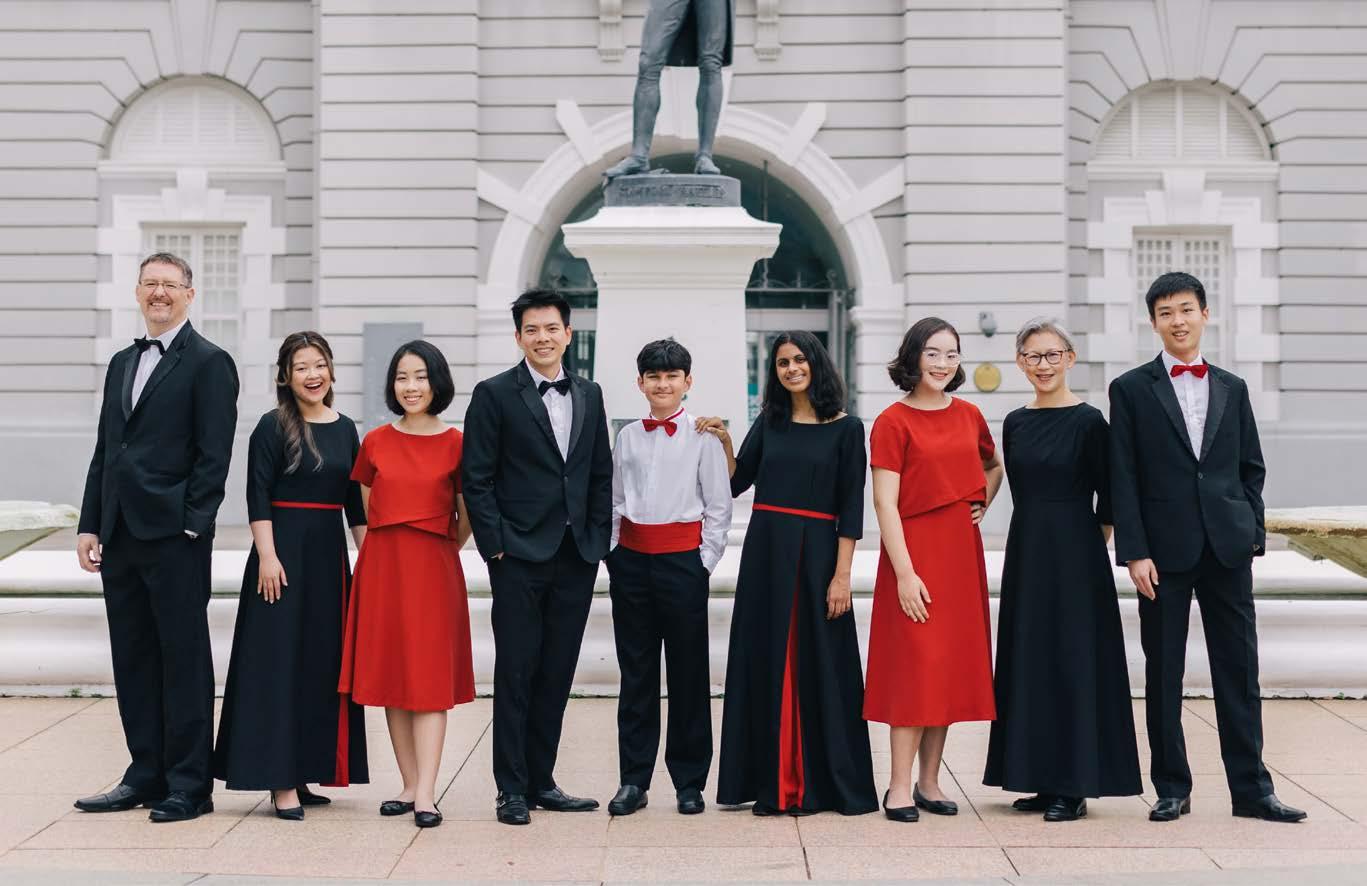
Singapore Symphony 2425 Season Jul – Dec 2024
Beethoven’s Ode to Joy
25 & 26 Jul 2024
Esplanade Concert Hall
Carmina Burana
22 & 23 Aug 2024
Esplanade Concert Hall
Midsummer Night’s Dream
25 & 26 Oct 2024
Victoria Concert Hall

SSO Organ Series: A Gothic Halloween
27 Oct 2024
Victoria Concert Hall
Gloria!
29 & 30 Nov 2024
Victoria Concert Hall
SSO Christmas Concert 2024
12–14 Dec 2024
Victoria Concert Hall
CHIEF EXECUTIVE OFFICER
Kenneth Kwok
DEPUTY CEO, PROGRAMMES & PRODUCTION
Kok Tse Wei
DEPUTY CEO, PATRONS & CORPORATE SERVICES
Jenny Ang
ORGANISATION DEVELOPMENT
Lillian Yin
CEO OFFICE
Shirin Foo
Musriah Bte Md Salleh
ARTISTIC PLANNING
Hans Sørensen (Head)
Artistic Administration
Jodie Chiang
Jocelyn Cheng
Michelle Yeo
OPERATIONS
Ernest Khoo (Head)
Library
Lim Lip Hua
Wong Yi Wen
Orchestra Management
Chia Jit Min (Head)
Charis Peck Xin Hui
Kelvin Chua
Production Management
Noraihan Bte Nordin
Nazem Redzuan
Leong Shan Yi
Asyiq Iqmal
Ramayah Elango
Khairi Edzhairee
Khairul Nizam
Benjamin Chiau
COMMUNITY IMPACT
Community Engagement
Kua Li Leng (Head)
Whitney Tan
Lynnette Chng
Samantha Lim
Terrence Wong
Choral Programmes
Kua Li Leng (Head)
Regina Lee
Chang Hai Wen
Mimi Syaahira
Singapore National Youth Orchestra
Ramu Thiruyanam (Head)
Tang Ya Yun
Tan Sing Yee
Ridha Ridza
ABRSM
Patricia Yee
Lai Li-Yng
Joong Siow Chong
Freddie Loh
May Looi
William Teo
PATRONS
Development
Chelsea Zhao (Head)
Nikki Chuang
Sarah Wee
Sharmilah Banu
Eunice Salanga
PATRONS
Digital & Marketing Communications
Cindy Lim (Head)
Chia Han-Leon
Calista Lee
Germaine D’Rozario
Myrtle Lee
Hong Shu Hui
Jana Loh
Sherilyn Lim
Elizabeth Low
Corporate Communications
Elliot Lim
Customer Experience
Randy Teo
Dacia Cheang
Joy Tagore
CORPORATE SERVICES
Finance, IT & Facilities
Rick Ong (Head)
Alan Ong
Goh Hoey Fen
Loh Chin Huat
Md Zailani Bin Md Said
Human Resources & Administration
Valeria Tan (Head)
Janice Yeo
Fionn Tan
Netty Diyanah Bte Osman
